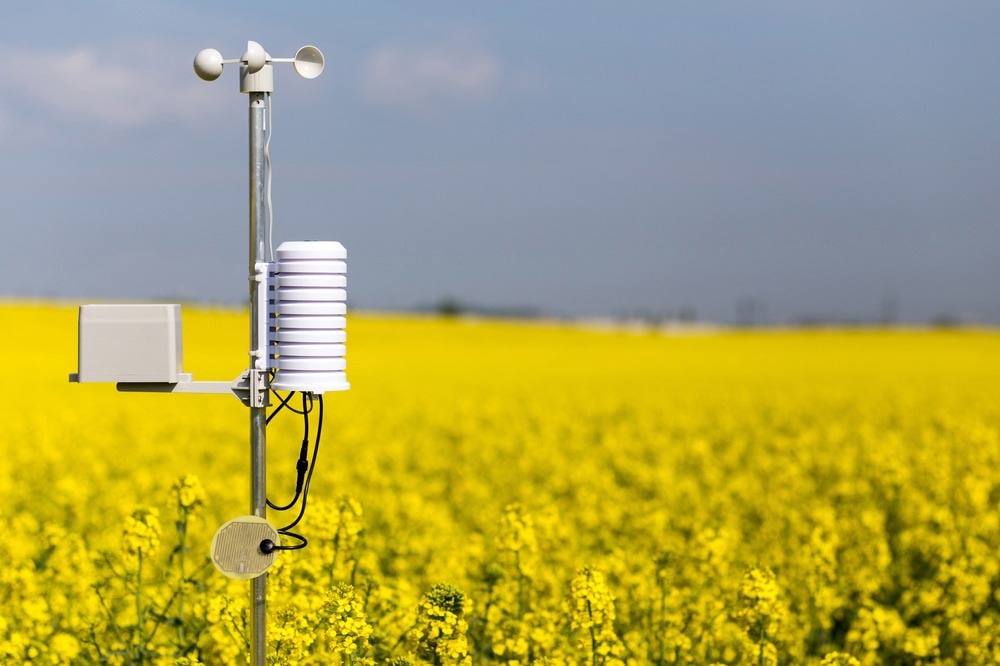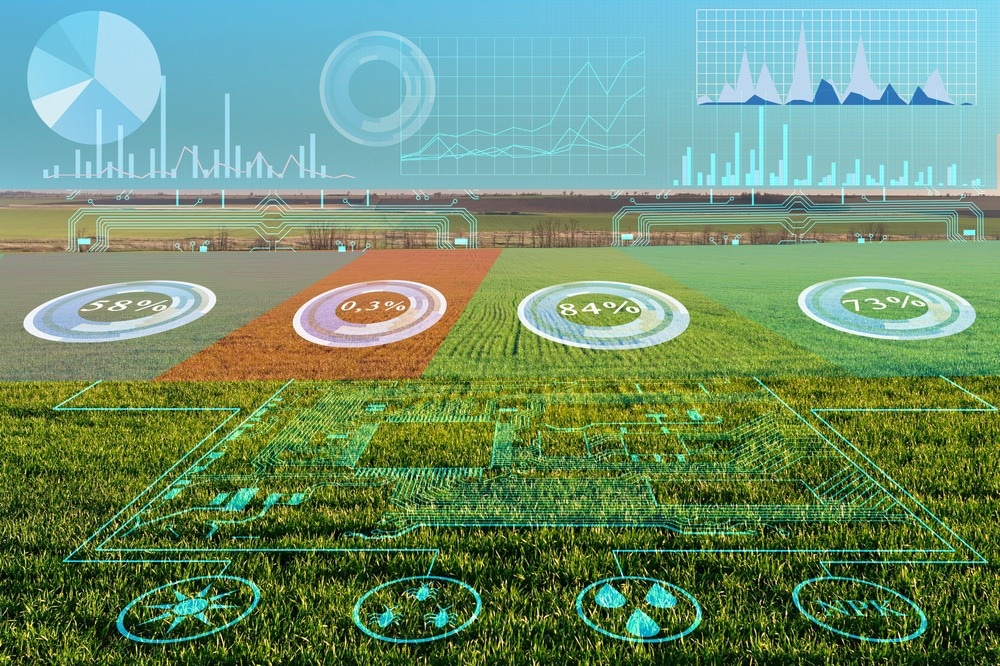The agricultural industry utilizes many different types of sensors as part of a farm management concept known as precision agriculture. These sensors can measure a variety of variables, including soil moisture content and pH, and have the potential to play an important role in the future of farming.

Image Credit: Lukas Puchrik/Shutterstock.com
The agricultural industry already faces many significant challenges, including labor shortages, reductions in soil fertility due to poor land management, unpredictable variability in the climate, and the growing need to implement more sustainable practices.
Precision agriculture, a farm management strategy that utilizes information technology to optimize agriculture's productivity and sustainability, could help address these issues whilst ensuring that farmers can meet the rising demand for food.
What Types of Sensors are Used in Precision Agriculture?
'Precision agriculture involves using a multitude of different sensors, such as electrochemical sensors, which can measure soil pH and nutrient content, and mechanical sensors for measuring soil compaction. Other commonly used sensors include dielectric sensors, which calculate soil moisture levels, and optical sensors that can detect weeds and determine soil composition
Sensors can be portable, fixed in the field, or even attached to agricultural machinery like tractors, combines, and sprayers to aid in obstacle avoidance, measure the quantity of crops harvested, or determine the volume of agrochemicals used.
Sensors can also take measurements from the air while attached to satellites and drones. These measurements can be used to check the health of crops, identify factors that could be detrimental to crop health, conduct physical surveys of the landscape, and aid in flood monitoring.
As well as monitoring crop health, several different types of sensors can be used to gauge livestock health. These sensors may collect data on animal movements, food and water consumption, and air quality.
What are the Benefits of Using Sensors in Agriculture?
The use of sensors in farming optimizes food production, allowing for greater yields while requiring fewer inputs, thereby increasing profits for farmers, helping to combat food insecurity, and improving the sustainability of agriculture.
The data collected by sensors provides farmers with a large amount of information on which to base their decisions. This reduces the risk that farmers will make poor decisions that could have negative financial consequences and cause disruption to food production. It also means that farmers can make accurate predictions on upcoming crop yields, facilitating better planning to help reduce food waste.
Many sensors can even be programmed to send alerts if recorded measurements reach pre-set values, which enables rapid responses to any issues that arise and streamlines production processes.
The use of sensors in agriculture also comes with significant environmental benefits. It is estimated that around 30% of the nitrate fertilizer applied to crops in the United States is washed away, leading to the contamination of streams, lakes, and oceans.
The presence of fertilizer in the water can create algal blooms, consequently reducing oxygen levels and killing aquatic life. Sensors can be used to determine the exact quantity of fertilizer required, reducing the excess run-off and subsequent environmental contamination.
The information provided by sensors can also be used to calculate the best time to water crops and the exact amount of water they require, which optimizes irrigation processes.
As the agricultural industry is responsible for 70% of global freshwater usage and even well-managed irrigation systems can waste up to half of the water applied to crops, the widespread usage of these sensors could significantly reduce global water consumption.
Additionally, using sensors to monitor livestock health makes predicting and preventing possible disease outbreaks easier. Not only will this provide financial benefits to farmers, but it should also considerably improve animal welfare.

Image Credit: KoSSSmoSSS/Shutterstock.com
The Future of Agricultural Sensors
Although there is still a long way to go before sensors are commonplace in agriculture across the globe, the clear benefits of their use have led to the rising acceptance of this relatively new technology amongst farmers and suggest that they will play an important role in the future of sustainable agriculture. This is supported by predictions that the global agricultural sensor market will grow from a value of $1.55 billion in 2021 to $3.79 billion by 2028.
However, although sensors have the potential to revolutionize agriculture, their reliance on a wireless connection may limit their potential to influence the industry in developing countries, as will the high cost of their purchase and the fact that many farmers in these areas are unaware of the benefits they can provide.
Despite this, farmers in developing regions are increasingly commercializing and adopting sensors. This trend is expected to continue if public and private sector funding for precision agriculture is increased. As the technology behind sensors is improved, the scalability and practicality of using these devices will increase, as will their importance to the agricultural industry.
Sources:
- Bogue, R. (2017). Sensors key to advances in precision agriculture. Sensor Review, pp.1-6. https://doi.org/10.1108/SR-10-2016-0215
- Neethirajan, S. (2020). The role of sensors, big data and machine learning in modern animal farming. Sensing and Bio-Sensing Research, 29, p.100367. https://doi.org/10.1016/j.sbsr.2020.100367
- Abbasi, A.Z., Islam, N. and Shaikh, Z.A. (2014). A review of wireless sensors and networks' applications in agriculture. Computer Standards & Interfaces, 36(2), pp.263-270. https://doi.org/10.1016/j.csi.2011.03.004
- Rivers, M., Coles, N., Zia, H., Harris, N.R. and Yates, R. (2015). How could sensor networks help with agricultural water management issues? Optimizing irrigation scheduling through networked soil-moisture sensors. IEEE Sensors Applications Symposium (SAS), pp.1-6. https://doi.org/10.1109/SAS.2015.7133593.
- Agriculture Sensor Market Size, Share & Trends Analysis Report by Type, by Application (Dairy Management, Soil Management, Climate Management, Water Management, Smart Green House), by Region, and Segment Forecasts, 2021-2028.
Further Reading